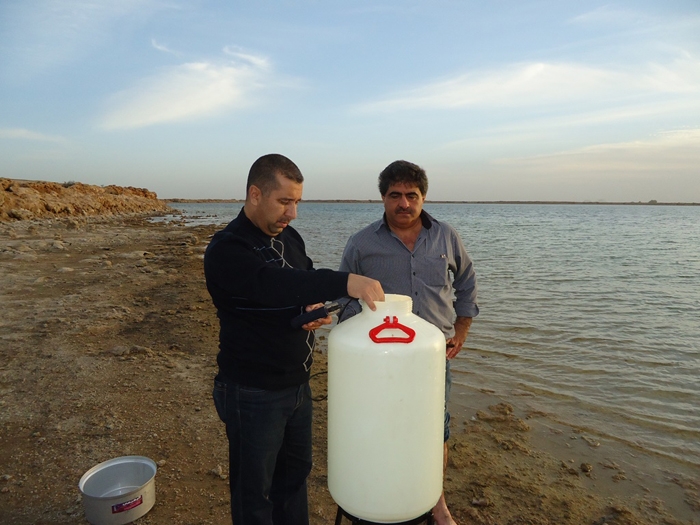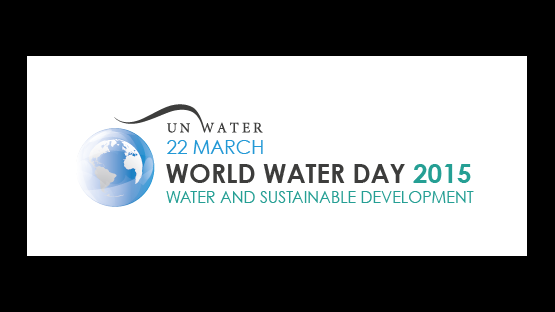Water has always been and will remain the sine qua non for life on Earth-the biochemistry of every organism on the planet is based on water. Not only is it required to conduct photosynthesis in plants, and to nourish and sustain animal life, the presence of potable water is also critical to sustainable, socioeconomic development.
With the target date of the United Nations Millennium Development Goals (MDGs) now behind us, and as the Post-2015 sustainable development goals (SDGs) continue to be drafted by the UN General Assembly, we're provided with a rare opportunity to explore and expand the role of water in the sustainable development agenda.
This year's World Water Day-observed annually on March 22-intends to capitalize on that opportunity by gathering international organizations, NGOs and other stakeholders under this year's theme, "Water and Sustainable Development."
Sustainable development is distinguished from normal economic development in the sense that it meets the needs of the present, without compromising the ability of future generations to meet their own needs. Today, a total of 748 million people still do not have access to an improved drinking water source. Moreover, more than 1.7 billion people live in river basins whose resources are depleted at a rate faster than natural recharge-if this trend continues, it's estimated that two-thirds of the global population will live in water-stressed countries by 2025. By meeting this challenge in an environmentally-consistent manner, we will be able to improve the health, welfare and productivity of entire populations-factors which all contribute to sustainable development.
Since its founding, the IAEA's technical cooperation (TC) programme has carried out hundreds of projects to identify, manage and protect water sources around the world. Whether the challenge is water-scarcity or water potability, these projects contribute to the MDGs by encouraging economic development, improving health and supporting poverty eradication.
A high-water mark: IAEA observes World Water Day 2015

Iraq has recently completed a national project1 which leveraged nuclear techniques to improve the management of the country's groundwater resources. In 2012, Iraq endured a long period of dry weather, causing shortages in fresh surface water and affecting the country's agriculture, livestock and health sectors. In response to the growing need for accessible water, Iraq launched a TC project to build its capacities in environmental isotope techniques.
With the support of the TC programme, Iraq successfully established its first environmental isotope laboratory, and staffed the facility with experts whose capacities were developed in IAEA workshops, training courses and scientific visits. Today, Iraq's Ministry of Science and Technology is capable of determining the quantity, potability and depth of groundwater sources, thereby buoying the country's water management efforts.
But often, the challenge isn't to determine the quantity of nearby water sources, but rather to ensure their quality. An ongoing, interregional TC project2 is supporting the efforts of 24 Member States in detecting harmful algal blooms (HABs). When microscopic algae accumulate in a body of water, their natural toxins can often destroy nearby marine life, and can sometimes poison human if they enter the food chain. HABs can be quickly and accurately identified, however, using a nuclear technique called the receptor binding assay (RBA).

The interregional project facilitated a transfer of knowledge in the use of RBA, from countries with more experience to those with fewer capacities in the technique. Armed with the necessary expertise, the participating Member States are now in a position to quickly detect and assess the harmfulness of HABs before they enter the food chain, thereby avoiding economic and health-related consequences.
The Sahel is another region where water availability and quality are ongoing concerns. Unfortunately, a series of recurrent droughts, the mismanagement of local acquirers, and demographic changes have taken their toll on the already-scarce water resources of this semi-arid region. In response, an ongoing interregional TC project has marshalled the efforts of 13 IAEA Member States to ensure the sustainability of groundwater sources throughout the Sahel. Isotopic tracers are central to the project, as their use can reveal new details about groundwater systems, including the age, origin, and composition of the water. Through the application of chemical and isotopic techniques to soil samples in the region, Member States will have more comprehensive information with which to develop water use and management policies.
Entitled "Integrated and Sustainable Management of Shared Aquifer Systems and Basins of the Sahel Region," the project has been operational for nearly three years, and has already organized meetings and workshops, expert visits, and two TC Fellowships.
As a resource for industry, and a necessity for life, water is without a substitute. We rely on this precious resource to provide energy, nourish our bodies, sustain our soil and crops, produce chemicals, transport goods, and much more. With the overwhelming importance of water in mind, the IAEA will continue to support Member States efforts to measure and manage their water resources, above and below ground.
1 IRQ/7/005
2 INT/7/017


